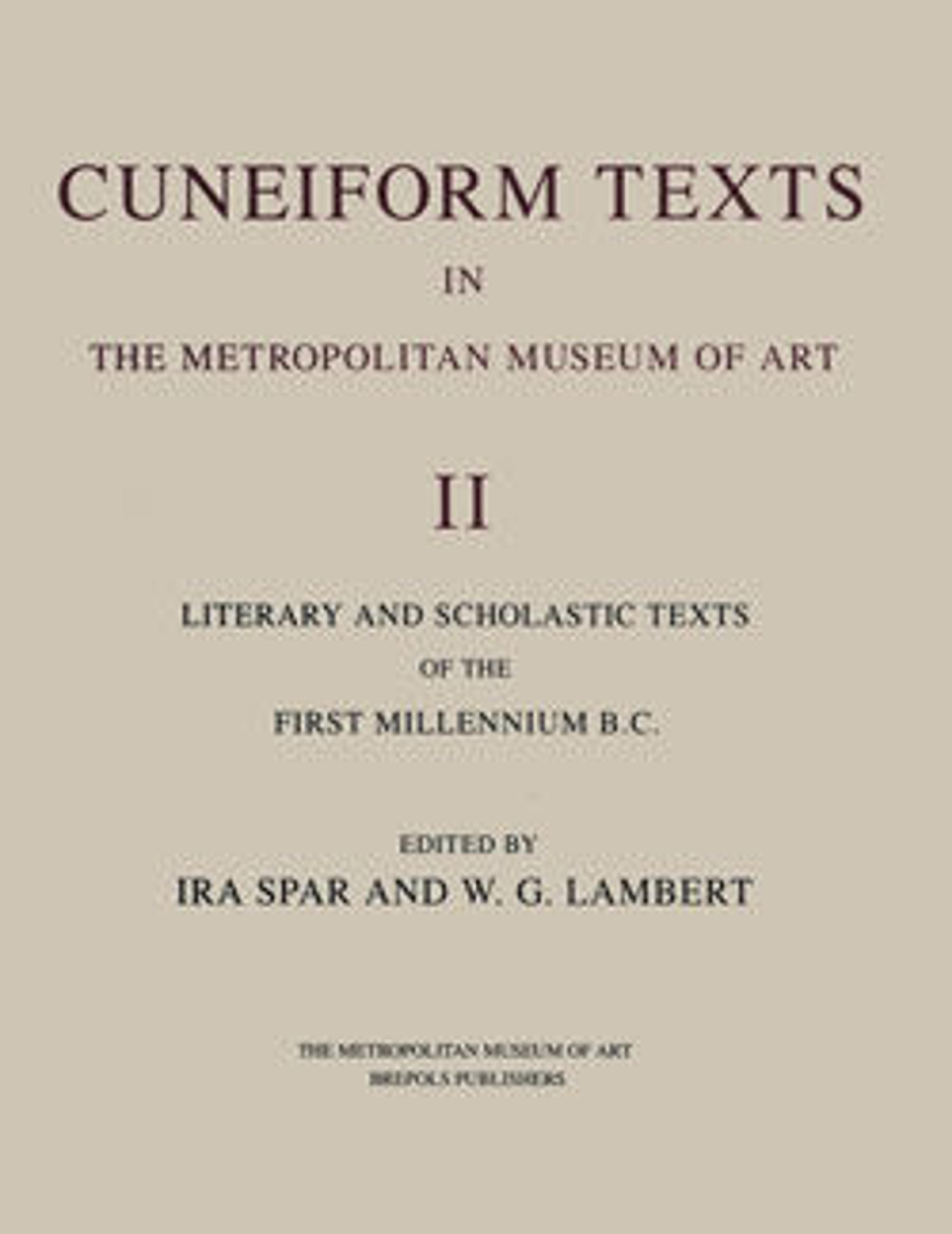Cuneiform tablet: Gula incantation
The invention of writing in approximately 3300 B.C. was one of many developments in administrative technology--including the use of geometric tokens for counting and cylinder seals to guarantee transactions--that accompanied the growth of the first cities and states in southern Mesopotamia. Proto-cuneiform is the name given to the earliest form of writing--pictograms that were drawn on clay tablets. Gradually, the pictograms became abstracted into cuneiform (Latin, "wedge-shaped") signs that were impressed rather than drawn. At its greatest extent, cuneiform writing was used from the Mediterranean coast of Syria to western Iran and from Hittite Anatolia to southern Mesopotamia. It was adapted to write at least fifteen different languages. The last dated cuneiform text has a date corresponding to A.D. 75, although the script probably continued in use over the next two centuries.
This late Babylonian tablet contains the text of an incantation. The text, which reads from left to right, addresses Gula and Marduk (here identified by his Sumerian name, Asalluhi) – deities associated with healing – and calls upon them to help cure an afflicted patient, who is thought to have been attacked by a ghost. Although physicians (Akkadian asus) treated a variety of medical problems, exorcists (Akkadian ashipus) also played an important role in healing by battling with the malevolent beings held responsible for medical problems through incantations, amulets, and accompanying rituals. The lore of the ashipu was considered secret, but texts such as this one show how spoken words could be handed down across generations. It is likely that this tablet came from Sippar and was part of a large archive of medical texts.
This late Babylonian tablet contains the text of an incantation. The text, which reads from left to right, addresses Gula and Marduk (here identified by his Sumerian name, Asalluhi) – deities associated with healing – and calls upon them to help cure an afflicted patient, who is thought to have been attacked by a ghost. Although physicians (Akkadian asus) treated a variety of medical problems, exorcists (Akkadian ashipus) also played an important role in healing by battling with the malevolent beings held responsible for medical problems through incantations, amulets, and accompanying rituals. The lore of the ashipu was considered secret, but texts such as this one show how spoken words could be handed down across generations. It is likely that this tablet came from Sippar and was part of a large archive of medical texts.
Artwork Details
- Title: Cuneiform tablet: Gula incantation
- Period: Neo-Babylonian or Achaemenid
- Date: ca. mid- to late 1st millennium BCE
- Geography: Mesopotamia, probably from Sippar (modern Tell Abu Habba)
- Culture: Babylonian or Achaemenid
- Medium: Clay
- Dimensions: 2 in. × 2 9/16 in. × 1 in. (5.1 × 6.5 × 2.5 cm)
- Credit Line: Purchase, 1886
- Object Number: 86.11.130
- Curatorial Department: Ancient West Asian Art
More Artwork
Research Resources
The Met provides unparalleled resources for research and welcomes an international community of students and scholars. The Met's Open Access API is where creators and researchers can connect to the The Met collection. Open Access data and public domain images are available for unrestricted commercial and noncommercial use without permission or fee.
To request images under copyright and other restrictions, please use this Image Request form.
Feedback
We continue to research and examine historical and cultural context for objects in The Met collection. If you have comments or questions about this object record, please contact us using the form below. The Museum looks forward to receiving your comments.
